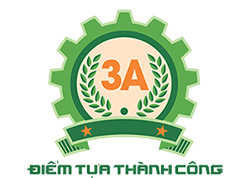Cycle Time is the time it takes to complete the production of one unit from start to finish. Through tracking completed items and net production time (NPT), you can determine the time it takes to complete one cycle (one crochet hook, in the above example).
If your crochet hook team worked 90 hours in a week and whittled 30 hooks, your cycle time would equal 3.
How to calculate cycle time?
CT [3] = NPT [90] / U [30]
Since your cycle time is 3 hours per hook and your Takt Time is 2 hours, your team isn’t keeping up with demand. You’d better do something about that!
Takt Time vs. Cycle Time
Takt Time measures customer demand; Cycle Time measures work. In the above example, you can see that your team isn’t working fast enough to meet demand. To meet demand, you need to raise your CT.
Say you teach your team a faster hook-whittling technique that doubles their production speed. Your cycle time would equal 1.5, beating your Takt Time of 2:
CT [1.5] = NPT [90] / U [60]
But now is your team overproducing? Should you really keep up this pace? Will your production facility rapidly become overcrowded with surplus crochet hooks?
What is Lead Time?
Lead Time is the time it takes for one unit to go through the entire production cycle, from taking the order to payment receipt. If Lead Time is much higher than Cycle Time, it means you have a lot of units in your inventory.
Continuing with the crochet hooks. Say your hooks ship via carrier pigeon, just for the romance of it all. How will the time lag impact your business?
How to calculate Lead Time?
If it takes an unladen pigeon 10 minutes to deliver an order request, and 20 minutes to return with a crochet hook in its beak, your lead time will equal 2:
LT [2 hours] = WT [10 minutes] + CT [1.5 hours] + DT [20 minutes]
Lead Time vs. Cycle Time
Lead Time measures the time elapsed between order and delivery. In other words, it measures your production process from your customer’s perspective. Cycle Time starts when the actual work begins on the unit, and ends when it is ready for delivery. In other words, Cycle Time measures the completion rate and Lead Time measures the arrival rate.
From the customer’s perspective, it takes 2 hours to get a crochet hook from your company. Although your Lead Time and your Takt Time are equal, your company is still overproducing crochet hooks.
Aim to balance your Cycle Time with your Takt Time, which measures demand — not your Lead Time, which measures customer waiting times.
Measuring Takt Time, Cycle Time and Lead Time
With Toggl Track, it’s easy to fold Takt Time, Cycle Time, and Lead Time into your workweek. All of these time-tracking systems can be vital in making sure your work processes are flowing in the most efficient manner possible.
